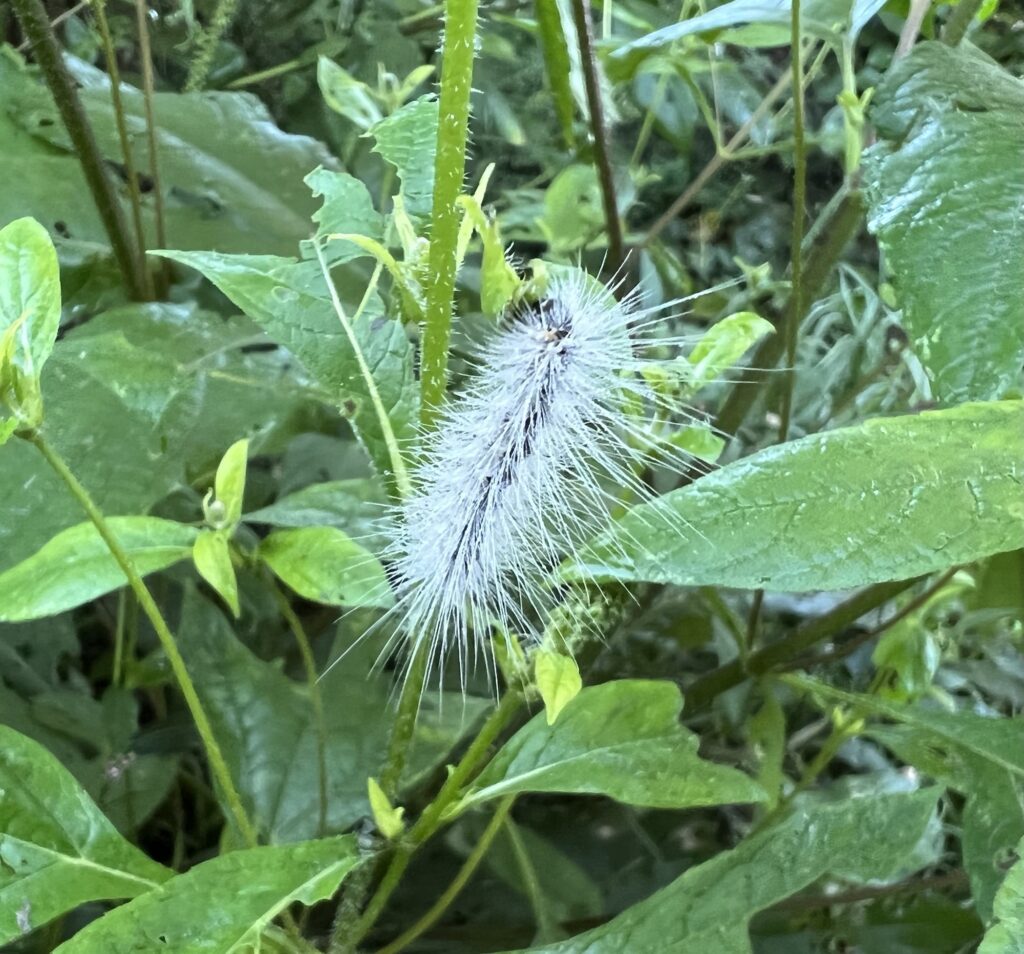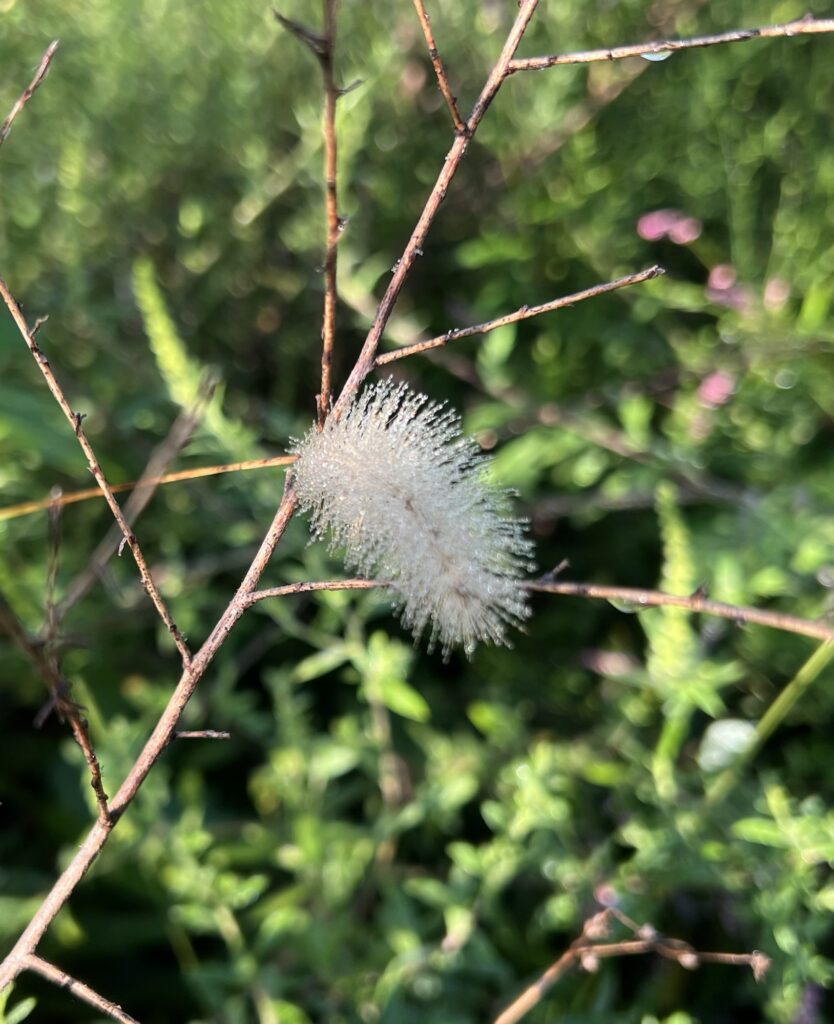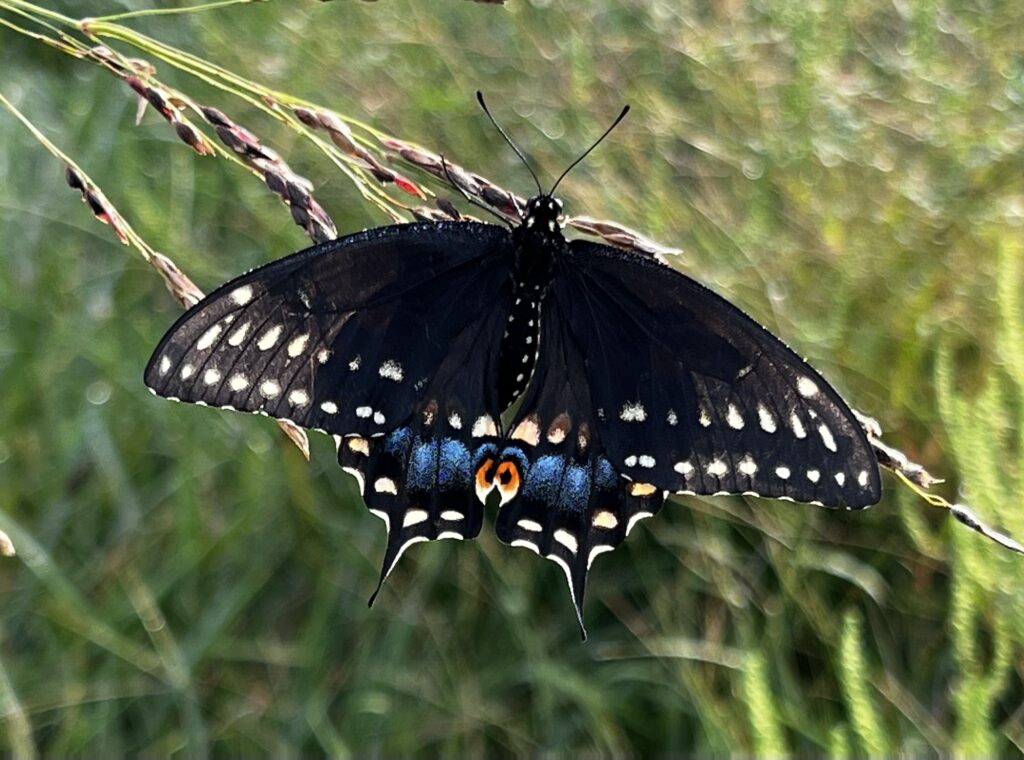
As summer draws – reluctantly, it seems – to a close, butterflies and moths are still frolicking among the wildflowers in the pastures. Though I’ll be happy to see the heat and humidity go as we transition to fall, I’ll miss these lovely, carefree creatures. Come along with me as we take a closer look at some of these beautiful specimens!
One of the most spectacular butterflies that frequents our farm is the Eastern Black Swallowtail. It has the classic Swallowtail butterfly appearance, but instead of the black markings on a yellow base that you might expect with an Eastern Tiger Swallowtail, it’s primarily black with striking blue and orange markings. It’s a very large butterfly, and could (at least from the corner of your eye) look like a small bird flapping its wings. Really! Note: the Eastern Black Swallowtail and Spicebush Swallowtail can look very similar to the untrained eye – this site helps with distinguishing between the two types.
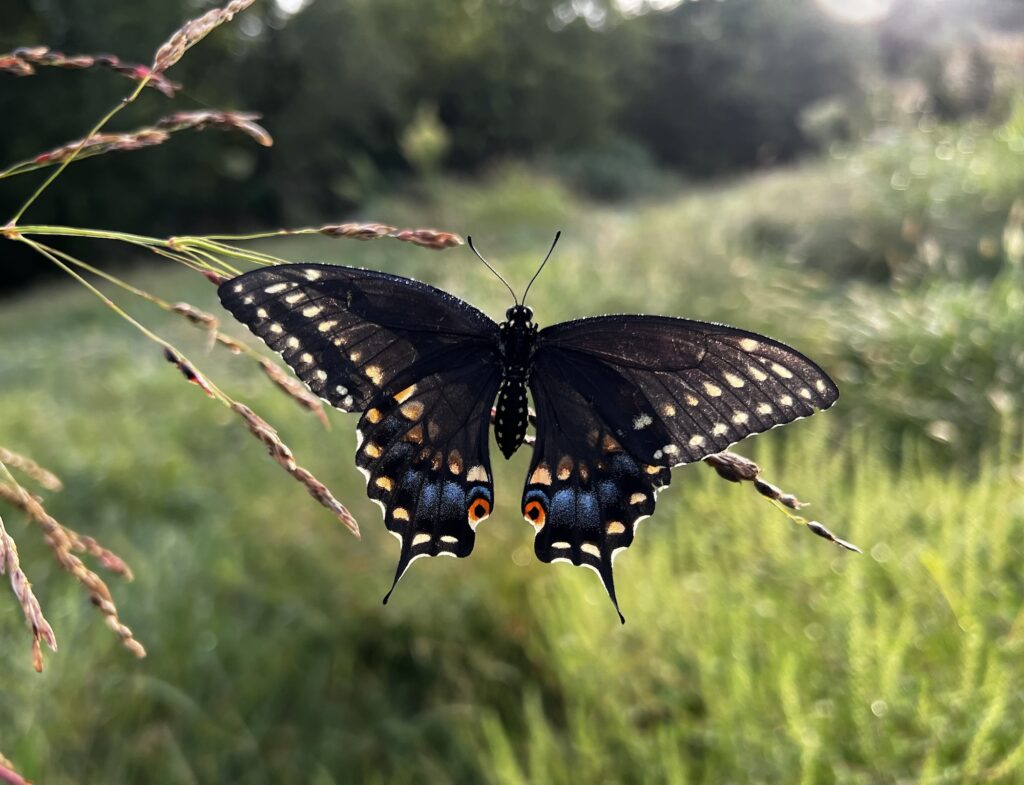
From top 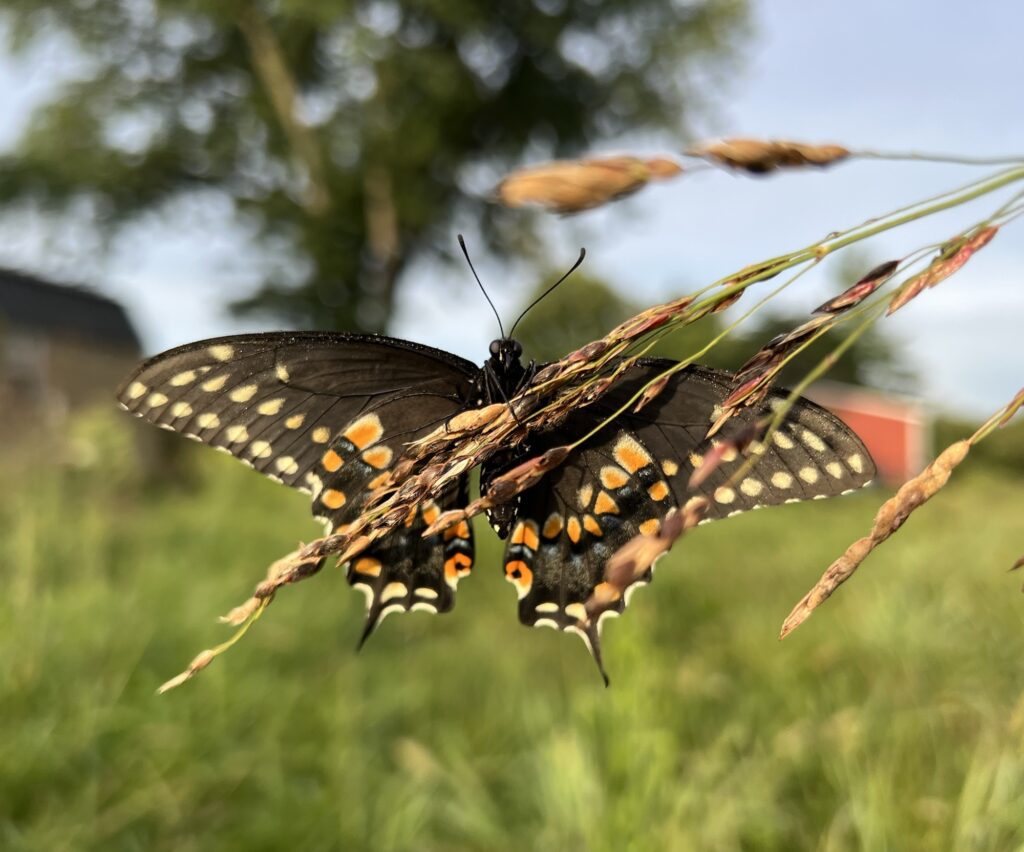
Underside
A common visitor here is the Buckeye, a lovely butterfly in its own right. Mostly brown with orange and cream markings, it has two distinctive eye spots on its wings that make identification easy. This is one of the least skittish butterflies I encounter here – it often ingores the passerby, preferring to focus on basking in the sunshine (unlike the very flighty Monarchs, who simply refuse to allow an eager photographer to capture them in repose).
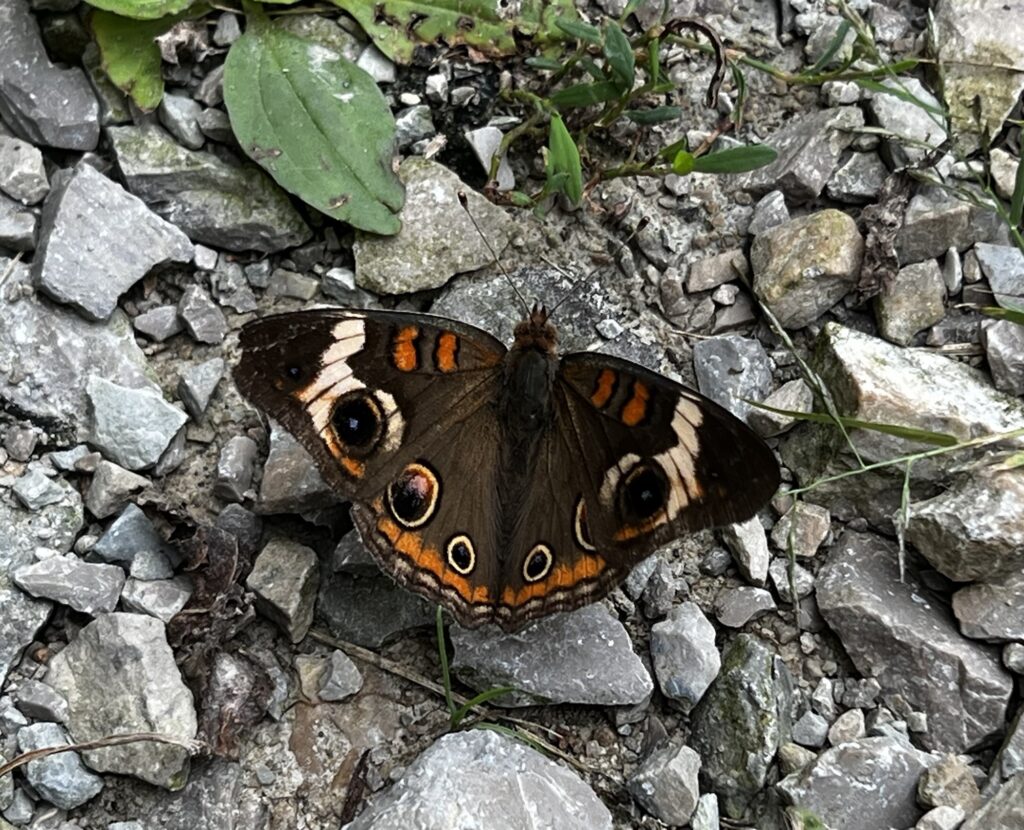
This snowy-white moth is a Virginian Tiger Moth. Does the name ring a bell? One of the common (and well-known) caterpillars seen out in these parts is the Woolly Bear, which becomes the Isabella Tiger Moth. The Woolly Bear is the rust-and-black caterpillar that, in folklore, is thought to predict how harsh the upcoming winter will be. The Virginian Tiger Moth is also known as the “Yellow Woolly Bear” in its caterpillar form because the caterpillars are often yellow or orange in color.
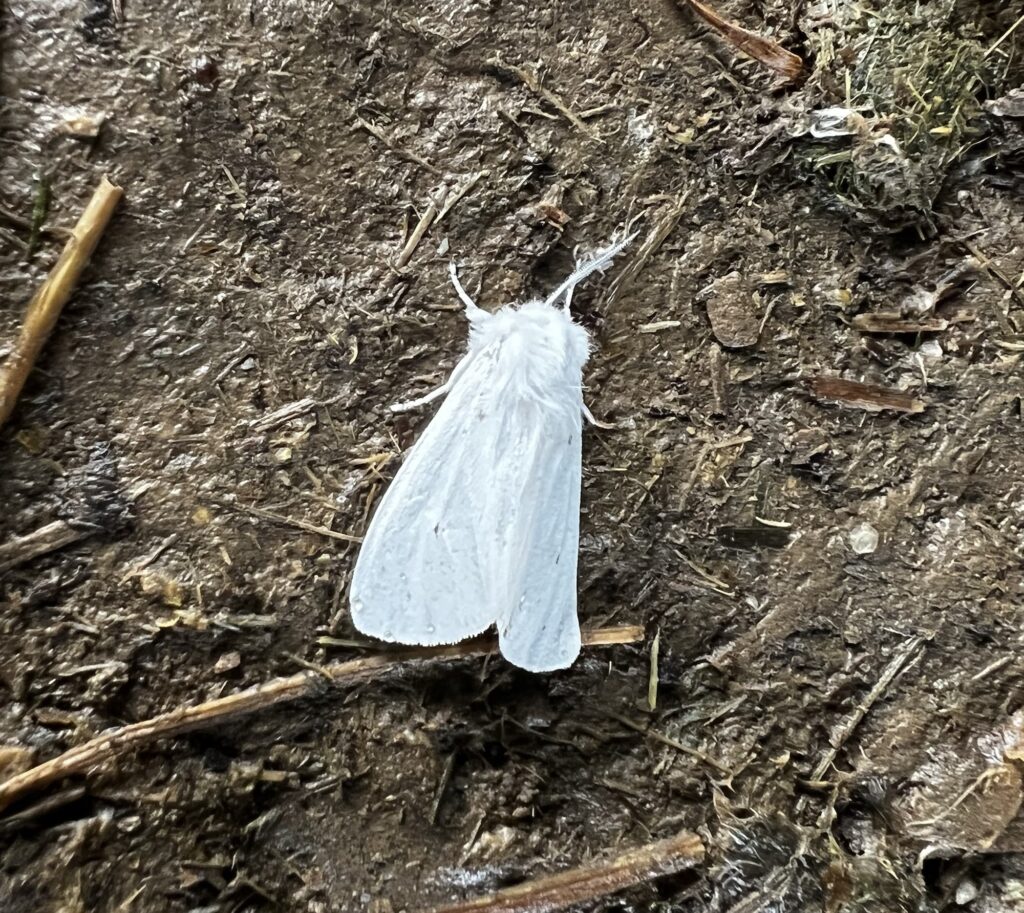
It’s always a pleasant surprise to solve a mystery while writing a blog post – in this case, I’d photographed many fuzzy, white caterpillars recently and had been unsuccessful in identifying them using online resources; now, after researching the Virginian Tiger Moth, I think that these may actually be the Virginian Tiger Moth’s larval form. These white caterpillars sported long, white hairs that warned potential predators (and nosy people) to stay away. They also mimicked the shape of plants nearby. Great camouflage!
And this is where the stunning Swallowtail tired of the paparazzi and flew away. I watched it flutter above the pasture in that inimitable butterfly way: beauty for beauty’s sake. Safe travels, my friend.


